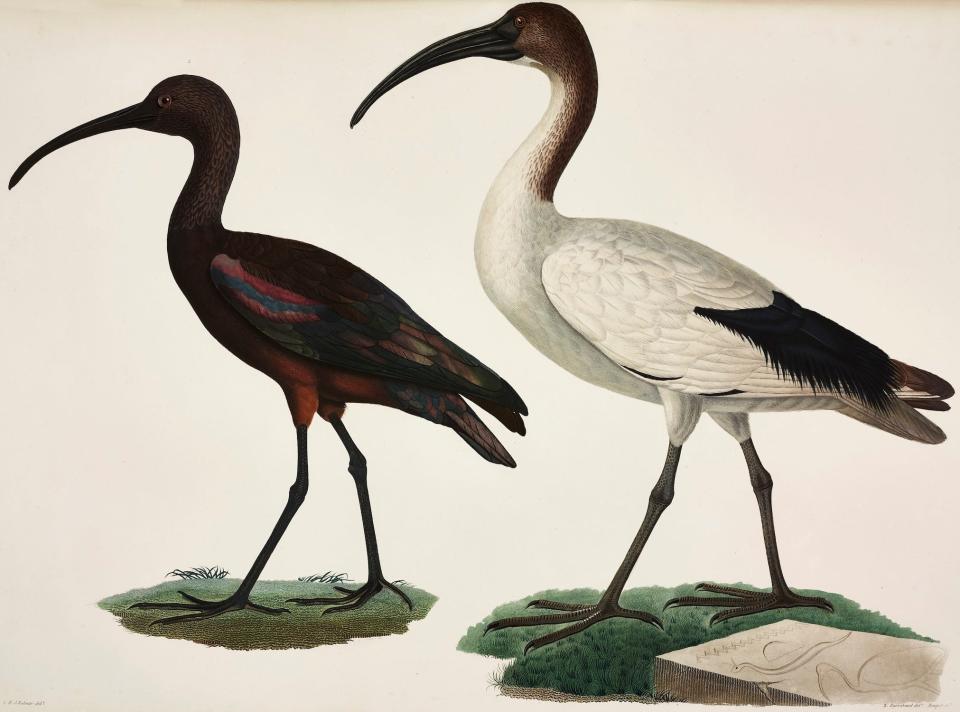Mummified animals Napoleon's scientists brought back from Egypt sparked a pre-Darwinian debate about evolution
Decades before Darwin, there was a debate over transformism, the idea that species change over time.
Two colleagues at the French natural history museum were on opposite sides of issue.
They hoped to settle the debate by unwrapping ancient mummies and comparing them to modern ones.
Throughout the early 1800s, the question of whether animals could turn into new species was hotly debated in scientific circles.
In 1798, Napoleon Bonaparte brought a slew of savants — geologists, engineers, and other scientists — on his unsuccessful attempt to take over Egypt. A collection of mummified animals that the scholars brought back from Egypt seemed to hold the key to the question of species transformation.
Naturalists Georges Cuvier and Jean-Baptiste Lamarck, colleagues at the French Museum of Natural History, represented the two sides of the debate.
Cuvier mocked Lamarck in his obituary
In 1832, a mocking eulogy was read before the French Academy of Sciences. The honoree, Lamarck, and the obituary’s writer, Cuvier, were both dead.
When recognizing the death of a colleague Cuvier had written, one should both commend their “useful works” while also calling attention to “more questionable” ideas that resulted from a “lively imagination.”
In this case, Cuvier was bashing Lamarck's theory of transformism. Lamarck thought that over a long period of time, the simplest animals became more complex and transformed into entirely new species. This was nonsense to Cuvier, who thought species could never change.
Naturalists Cuvier and Lamarck had first sparred three decades earlier when a mummified ibis arrived at the museum.
The ancient bird was indistinguishable from a modern one, seeming to prove Cuvier was right.
What is transformism?
In his elegy, Cuvier mocked Lamarck’s suggestion that a “desire” to swim creates webbed feet on an aquatic bird or lengthens the leg of another species that prefers not to get wet.
This was nearly 60 years before Charles Darwin published his theory of natural selection. At the time, some of the biggest questions in natural history were why animals went extinct, and new ones appeared after big gaps in the fossil record.
Lamarck is probably best known for writing that giraffes got their long necks by stretching for leaves and passing down that trait to their offspring. It wasn’t a completely new idea, but Lamarck was unique in saying such behavior could gradually lead to a new species.
He wrote that species were a convenient way for humans to catalog living beings. Since animals were constantly changing, a species was just a temporary category.
Cuvier, one of the founders of comparative anatomy, took a different view. Species were permanent. But he couldn’t deny that at certain intervals in the fossil record, new types of animals cropped up that never existed before.

Every so often, a natural catastrophe led to a new "epoch,” Cuvier thought. Some species went extinct; some suddenly appeared. If Lamarck was right, Cuvier said, there would be all sorts of in-between fossils, halfway between one species and another.
Geoffroy finds mummies in Egypt
Mummified animals that were thousands of years old seemed like a perfect entrypoint to look for evidence of change between ancient animals and their descendants.
Among Napoleon's savants was Etienne Geoffroy Saint-Hilaire, a naturalist who dissected every mongoose, fox, crocodile, and lungfish he could get his hands on.
The zoologist was enthusiastic about collecting animals, alive and dead. While descending into ruins, he saw his first mummies: ancient birds stacked like wine bottles in a cellar.

Ancient Egyptians revered many animals, including the ibis. To preserve the birds, they treated them with drying salts and poured oil and resin over the remains before wrapping them up and placing them in pots.
When Geoffroy returned from Egypt, he brought some of the wrapped ibises, cats, jackals, crocodiles, and other animals with him. Cuvier was eager to examine them. The mummification process worked well enough that even some of the “tiniest hairs” were still intact.
When Cuvier compared the bones of the long-dead ibises to modern birds, they were very similar.
Lamarck agreed. But the mummies were only 3,000 years old. At the time no one knew how old the planet was, but a few thousand years was “infinitely small” in the grand scheme of the Earth, Lamarck said in a lecture to his students.
It would be odd to see a new species in just a few millennia, he later wrote, “for the position and climate of Egypt are still very nearly what they were in those times.” It took both time and a unique environment to lead to a new species, he thought.
Cuvier, however, felt his belief in the unchanging nature of species had been vindicated. "I have shown that it is at the present time precisely as it was in the time of the Pharaohs ," he later wrote of the mummified ibis. Time and climate weren't enough to significantly alter the species.
He was wrong, just as Lamarck was incorrect about the mechanics of heredity.
Darwin’s predecessor
The evidence from the mummies wasn’t enough to squash the debate over transformism, despite Cuvier’s powerful reputation.
With the publication of Charles Darwin’s “On the Origin of Species” in 1859, the whole debate flared to life again, this time backed by the naturalist’s wide-ranging observations and extensive research.
Over two decades after Lamarck’s death, Darwin named him as one of his predecessors, albeit calling his views “erroneous.” The creator of the theory of evolution by natural selection admitted he was far from the first to note that “species undergo modification.”
Read the original article on Business Insider

 Yahoo News
Yahoo News 
